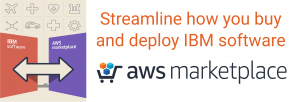Comparing and Contrasting Systems Engineering Tools with Building Information Modeling (BIM) Tools
With large-scale infrastructure projects, two essential methodologies have emerged: Systems Engineering (SE) and Building Information Modeling (BIM). Both approaches focus on improving efficiency, collaboration, and quality control, but they serve different purposes and are employed differently throughout a project’s lifecycle. Systems Engineering tools and BIM tools are frequently compared due to their overlapping functionalities, but Systems Engineering (SE) tools offer a more comprehensive, interdisciplinary framework that addresses far more than what BIM can handle.
In this blog, I will dive into comparing and contrasting SE tools with BIM tools, and discuss how Systems Engineering tools differ from BIM’s capabilities, particularly in managing the complexities of large, multi-disciplinary projects.
Understanding the Basics of BIM and Systems Engineering
What is Building Information Modeling (BIM)?
BIM is a digital representation of the physical and functional characteristics of a facility. It involves the creation of a digital twin of a building or infrastructure, using 3D models that incorporate layers of data, such as spatial relationships, geographic information, and properties of building materials.
BIM is widely used in architecture, construction, and engineering, offering the ability to simulate different aspects of a project before it is built. Through BIM, teams can collaborate on designs, perform clash detection, visualize progress, and estimate costs and timelines more effectively.
What is Systems Engineering (SE)?
Systems Engineering is a holistic, interdisciplinary approach that addresses the design, integration, and management of complex systems over their entire lifecycle. SE involves not just the technical design but also takes into account stakeholder needs, requirements management, risk management, and verification and validation (V&V) processes.
SE tools focus on ensuring that every element of a project — from its initial concept to its retirement — is accounted for and managed efficiently. SE tools help manage the technical and functional requirements of large, complex projects, involving multiple teams across different disciplines.
Key Differences Between SE Tools and BIM Tools
Although both BIM and SE tools help manage complex projects, their focus areas, depth of functionality, and methodologies differ greatly.
1. Scope of Application
BIM: Focuses primarily on physical aspects of a building or infrastructure project. It is heavily used in the construction and architectural industries for designing, simulating, and managing the physical components of a project. BIM is excellent for visualizing spatial relationships and generating a digital representation of buildings.
SE Tools: Go beyond just the physical design. They also focus on functional requirements, system behaviors, and lifecycle management. SE tools look at how a system functions within its environment, how it interacts with other systems, and how it can evolve over time. SE tools are used in industries like aerospace, defense, transportation, and large civil infrastructure projects where the complexity of operations and stakeholder needs goes far beyond the physical layout.
2. Focus on Systems vs. Structures
BIM Tools: Primarily concerned with the built environment — the geometry, materials, and construction processes. BIM deals with managing the physical and spatial properties of infrastructure, simulating how components fit together and operate as a building or structure.
SE Tools: Are focused on the system of systems. They manage not only the physical elements but also the functional, behavioral, and performance requirements that drive the operation of these systems. SE tools provide a structured framework to ensure that all aspects of a project, including mechanical, electrical, software, and even human systems, work together seamlessly. SE tools help manage the interconnections and dependencies between different systems, which is critical in complex projects like transportation systems, energy grids, and defense projects.
3. Requirements Management
BIM Tools: Typically handle design requirements related to physical structures, such as dimensions, materials, and spatial relationships. BIM tools can simulate how a building or structure will be constructed, but their capabilities for managing non-physical requirements, such as system performance or regulatory compliance, are limited.
SE Tools: Excel in requirements management by tracking both functional and non-functional requirements across the entire lifecycle of a project. SE tools can manage high-level stakeholder requirements down to the smallest technical details. They provide capabilities like traceability matrices, impact analysis, and verification and validation (V&V) to ensure that every requirement is met and nothing is overlooked. This is especially crucial in projects where safety, regulatory compliance, and long-term maintenance are paramount.
4. Stakeholder and Lifecycle Management
BIM Tools: Are designed for collaboration between design and construction teams, allowing them to visualize the project in 3D and ensure that everyone is on the same page regarding the physical build. BIM tools are particularly useful during the design and construction phases of a project but are less equipped to handle the ongoing operation, maintenance, or eventual decommissioning of a system.
SE Tools: Take a more holistic view, managing not only the design and construction phases but also the entire lifecycle of a system. From concept and design through implementation, operation, maintenance, and disposal, SE tools ensure that all stakeholder needs are addressed throughout. SE tools facilitate cross-disciplinary collaboration, allowing various stakeholders — engineers, contractors, project managers, and regulatory bodies — to work together cohesively.
5. Change and Risk Management
BIM Tools: Focus primarily on clash detection — ensuring that the physical elements of a project do not interfere with one another during construction. BIM tools can simulate changes to the design and see how they impact the physical layout, but they have limited capabilities for managing changes to system functionality or performance.
SE Tools: Offer robust change management features that help teams track and assess the impact of changes on the entire system, not just the physical components. SE tools provide tools for risk analysis, allowing teams to predict and mitigate potential issues before they arise. SE tools are also used to manage regulatory changes, ensuring that projects comply with all safety, environmental, and legal requirements throughout their lifecycle.
6. Integration with Other Disciplines
BIM Tools: Are primarily focused on architecture, engineering, and construction (AEC) disciplines. They enable collaboration between architects, civil engineers, and construction managers, helping them align their physical designs.
SE Tools: Are far more interdisciplinary. They integrate data from multiple engineering disciplines, including mechanical, electrical, and software engineering. SE tools can also interface with BIM systems to ensure that the physical design is aligned with the functional requirements of the system. In essence, SE tools provide a bridge between the technical and operational elements of a project.
7. Simulation and Testing
BIM Tools: Offer advanced capabilities for visualization and simulation of physical structures. They can model how a building will be constructed and simulate physical aspects like sunlight exposure, thermal properties, and energy usage. However, they do not provide simulations for system behaviors or performance metrics.
SE Tools: Are used for system-level simulations and testing. SE tools can simulate how the entire system will operate in real-world conditions, taking into account both physical and non-physical aspects, such as software behavior, environmental factors, and human interactions. SE tools support verification and validation (V&V) processes, ensuring that the system meets all performance and functional requirements before it is built.
How Systems Engineering Tools Go Beyond BIM
While BIM tools are essential for managing the physical and spatial aspects of construction projects, Systems Engineering tools provide a much broader and deeper set of functionalities that are crucial for managing the complexity of large-scale, multi-disciplinary projects.
Here are several ways in which SE tools go beyond the capabilities of BIM:
Holistic Project Management: SE tools cover not just the physical build but also the entire lifecycle of the system. They ensure that functional, behavioral, and regulatory requirements are managed and integrated into the project.
Interdisciplinary Collaboration: While BIM is focused on architecture and construction, SE tools integrate multiple engineering disciplines — mechanical, electrical, software, and human systems — ensuring that all aspects of a complex project work together seamlessly.
Advanced Requirements Management: SE tools offer robust capabilities for requirements management, traceability, and impact analysis, which go far beyond what BIM tools can provide. These features are essential for projects where compliance, safety, and functionality are as important as the physical design.
Change and Risk Management: SE tools provide detailed frameworks for managing changes and risks across the entire system, ensuring that any changes to requirements, performance, or design are tracked and assessed for their impact on the project as a whole.
System-Level Testing and Simulation: SE tools offer comprehensive capabilities for simulating and testing the entire system, not just its physical aspects. These simulations ensure that the system will function as expected in real-world conditions, reducing the risk of errors or failures once the system is operational.
Summary
While both BIM and Systems Engineering tools play essential roles in managing large, complex projects, they are used for different purposes. BIM tools are ideal for visualizing and managing the physical build of a project, particularly in architecture and construction. However, SE tools offer a broader, more holistic framework that covers not only the physical design but also the functional, behavioral, and operational aspects of a project throughout its entire lifecycle.
For large infrastructure projects that involve multiple engineering disciplines and complex stakeholder requirements, Systems Engineering tools provide the structure and rigor needed to ensure that all aspects of the system are accounted for and that the project is delivered on time, within budget, and to the highest possible standards.
What Next?
As infrastructure projects continue to grow in complexity, adopting a Systems Engineering approach is no longer optional — it’s essential. With IBM Engineering Lifecycle solutions provided by 321 Gang, you can take your projects to the next level by integrating comprehensive requirements management, robust traceability, and seamless collaboration across all project phases. IBM’s Engineering Lifecycle suite goes beyond traditional BIM tools, offering a powerful platform that supports the full lifecycle of your system, from design through to implementation, operation, and maintenance.
Ready to enhance your project outcomes, reduce risks, and ensure long-term success? Contact 321 Gang today to explore how IBM Engineering Lifecycle solutions can transform your approach to complex infrastructure projects. Let us help you navigate the complexities of modern engineering with confidence and precision.
Check out this related blog with additional detail

321 Gang | 14362 North FLW | Suite 1000 | Scottsdale, AZ 85260 | 877.820.0888 info@321gang.com

